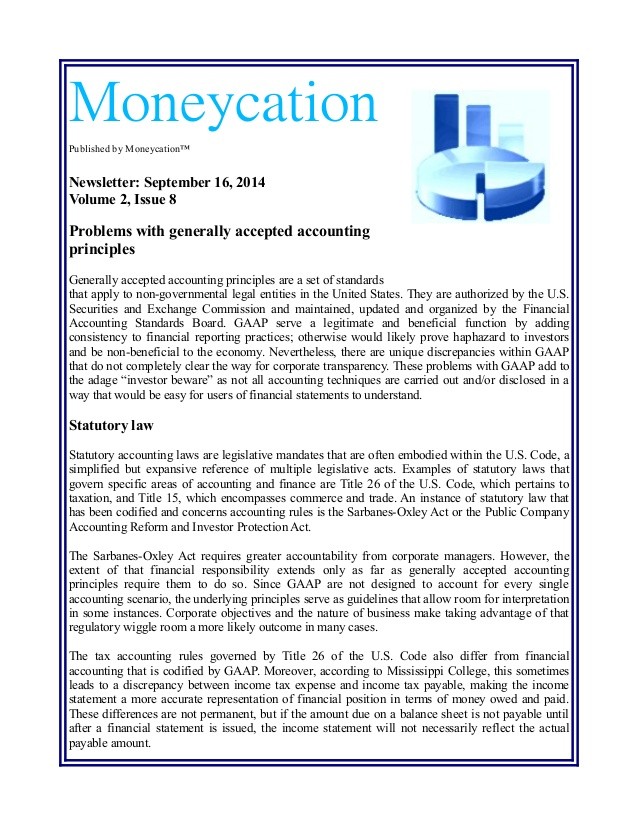Venture Outlook Earnings managment and Creative accounting How pension accounting can be used to
Post on: 21 Июль, 2015 No Comment

Sunday, January 18, 2009
Earnings managment and Creative accounting — How pension accounting can be used to boost short-term profits (Investors beware!)
If you are planning to invest in a company with a defined benefit retirement plan, then you’ll want to have a close look at the company’s pension accounting. Why? Because (1) companies can use pension accounting to smooth out earnings, or even report headline profits when the underlying operations are running at a loss, and (2) companies can report short-term profits even if they have vastly underfunded pension plans, plans which will eventually lower future profits as pension eligible employees retire and the company has to top-up the pension accounts to pay them.
What makes this particularly insidious is that this can be done without violating any accounting rules or principles. How is this done?
It stems from a basic feature of accrual accounting: the need to make estimates and assumptions. Accrual accounting generally requires management to make assumptions, for example, the depreciation period of assets, and actuarial assumptions in their pension accounts. Unfortunately, making aggresive (i.e. unrealistic) assumptions in their pension accounting can greatly distort the picture of the company’s financial health.
This is because pensions are liabilities that are incurred many years in the future, and affected by many variables which are hard to predict. For example, overestimating the discount factor in accrued pension benefits by just 1% can cause millions of dollars of liabilities to disappear from the pension accounts. The good news is that much of this can be detected by the astute investor, as long as you understand the mechanics of pension accounting.
The heart of the matter: Pension Fund’s Assets vs the company’s Pension Obligations (off balance sheet item)
At the heart of a defined benefit pension scheme is the pension fund, which is usually made up of assets such as equities, bonds and treasury securities. For the pension plan to work, the plan assets must be sufficient to pay the pensions expected by its employees. These pension plan assets are usually not recorded on the balance sheet, because they are held in a separate legal trust from the company itself, as an off-balance-sheet pension fund.
To know if a pension fund has enough assets to meet the needs of its (present and future) pensioners, we need to know how much money is the company obligated to pay out to its retired employees. This is known as the company’s pension benefit obligation. Determining a company’s benefit obligation can be complicated. By its nature, the future pension obligations depends on how long its employees live, how much salary they will earn when they retire (if the pension payments are pegged to their last drawn salaries), and how many of its present employees will stay on with the company till they are eligible for pensions. As you can imagine, determining the future pension obligations is an actuarial process — the plan administrator needs to make guesstimates about all these variables, much like the way insurers make guesstimates about how long people will live.
The administrator will also need to guesstimate when the cash needs to be paid out: how much will be paid out next year, how much for the year after that, and so on. For a pension plan to work, the administrator must set aside some money today for the future payouts each year. The amount company needs to set aside is not simply the sum of all expected benefit payouts, because money that you set aside today will earn interest (or it can be invested for capital gains and dividends) until it needs to be used to pay retirees. Because of this interest (or investment gains), the amount of money you need to set aside today is lower. To determine the amount the plan needs to set aside today, the administrator will discount all the future payouts by a discount rate to arrive at the net present value of pension obligations. Under accounting rules, the administrator is free to choose the discount rate that he/she wishes to apply, but as a principle it should be close to the risk-free interest rate or a conservative growth rate of an investment. This net present value of benefit obligations is the figure that is reported in the company’s financial statements.
For a pension plan to be viable. two things must happen: (1) its current plan assets must be equal to (or more than) the net present value of its benefit obligations. This means that the money it sets aside today will be enough, after growing with interest or investment returns, to pay out benefits to pensioners when they are due to pensioners. (2) the calculation of the present value of its benefit obligations must be correct. This means that its actuarial assumptions must be accurate, and its plan assets must grow at the rate greater than or equal to the discount rate used in calculating the present value of benefit obligations.
Both the present value of benefit obligations, and the fair value of plan assets are found in the notes of a company’s financial statements. (Because these plan assets are legally separate from the company, they are not consolidated on the balance sheet). If a plan’s assets are greater than the net present value of benefit obligations, then the plan is considered to be well funded. If the plan’s assets are less than the PV of benefit obligations, then the plan is considered to be underfunded.
In either case, the overfunding or underfunding is calculated as the difference between the value of two accounts on the balance sheet: prepaid pension costs on the assets side, and accrued benefit liability on the liabilities side. If prepaid pension costs exceeds accrued benefit liability, then the excess amount is the the overfunding. If accrued benefit liability exceeds prepaid pension costs, then the excess amount is the undefunding. This difference between the two accounts is recorded in Shareholder’s equity under accumulated comprehensive income. (Comprehensive income reflect gains and losses e.g. from forex movements, that are recorded directly to shareholder’s equity without going through the profit and loss accounts)
(Note 1: the net shortfall in funding may be less than the total shortfall reflected in the comprehensive income account, if it is shown. This is usually because of accounting adjustments and reclassifications.)
(Note 2: you won’t be able to tell the net pension shortfall just by looking at the Net Accumulated Comprehensive Income in Shareholder’s equity, because this is usually the net amount which includes other factors affecting comprehensive income, such as cumulative forex gains. The financial statement notes usually don’t break out the balance of each compoacnent of the Net Accumulated Comprehensive Income in the Shareholder’s equity)
How future (long-term) profits can be hit

There are two types of suprises that pension plans can spring on future profits:
- Obvious danger. If a plan is underfunded, then it means that you can expect the company to need to inject cash into the pension fund sometime in future.
So what you see in the fair value of plan assets, and the present value of benefit obligations accounts, and the discount rate used, will tell you if the company’s future reported earnings are going to be hit by costs of funding pensions. These costs aren’t seen in current earnings because of the nature of accrual accounting: such shortfalls are only recognized in the income statement (as a net benefit expense) against earnings when the benefits, and its accompanying sufficient-or-insufficient assets, accrue to the employee as each year passes and his/her pension benefit increases because of the additional year of service. It is only at that point in time that the funding shortfall is moved from shareholder equity:comprehensive income to shareholder equity:retained earnings.
How current (short-term) earnings can be manipulated
Each year, the income statement recognizes the additional pension benefits that accrue to employees for the extra year they have worked (service cost and interest cost), and the increase in plan assets from interest and investment growth. It also recognizes actuarial gains and losses (these are amortized over many years), which come about when actuarial assumptions have to be changed (for example, because employees are promoted faster than expected and become entitled to more benefits). The net difference between the increases in assets and increases in benefit obligations is the net benefit cost. This is what the company needs to contribute to the pension fund for the year, and it affects the earnings for the year.
Unfortunately the way increases in plan assets are accounted for makes the net benefit cost susceptible to manipulation by companies who are trying to boost their headline earnings. Under current accounting guidelines, the increase in pension plan assets that is recognized in the net benefit cost each year is not the actual return on the plan’s assets. Rather, the plan’s assets are assumed to have grown by some fixed amount each year. This amount is the expected return on plan assets and is an assumption made by the company. Ideally, this rate would be close to the discount rate used in calculating the present value of pension benefit obligations, so that the pension expenses recognized would be in tune with the overall pension plan’s funded status. However, if a company wants to goose up its profits in the short term, it can simply increase the expected return on plan assets and reduce the net benefit cost for the year. This has the effect of increasing the company’s earnings for the year.
However this earnings boost can only be maintained for the short term, because if the actual return on plan assets is less than the expected return on plan assets, the the shortfall is booked to the balance sheet shareholder’s equity under comprehensive income. Once this shortfall exceeds some percentage (for example 10%) of the total plan benefit obligations, then any excess shortfalls in the comprehensive income account must be amortized to each future year’s income statement through the net benefit cost under an entry called gains and losses or amortization of actuarial gains and losses.














